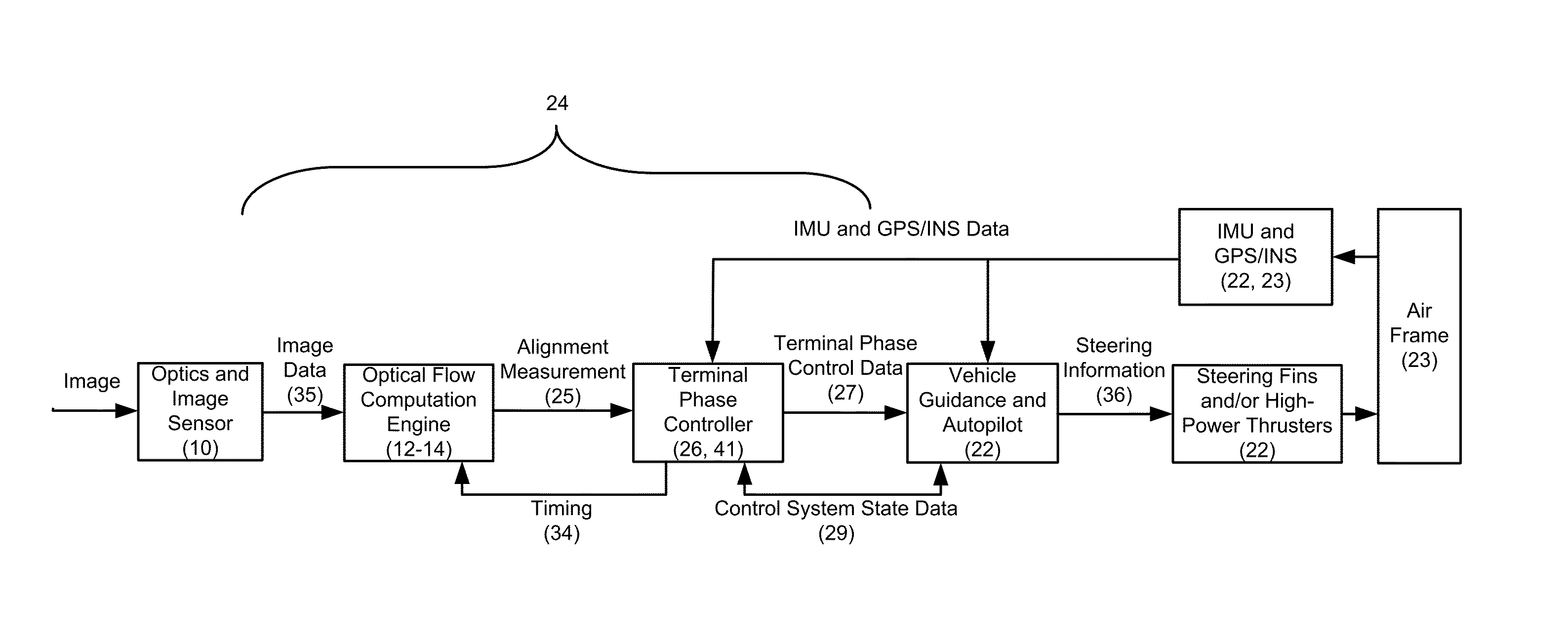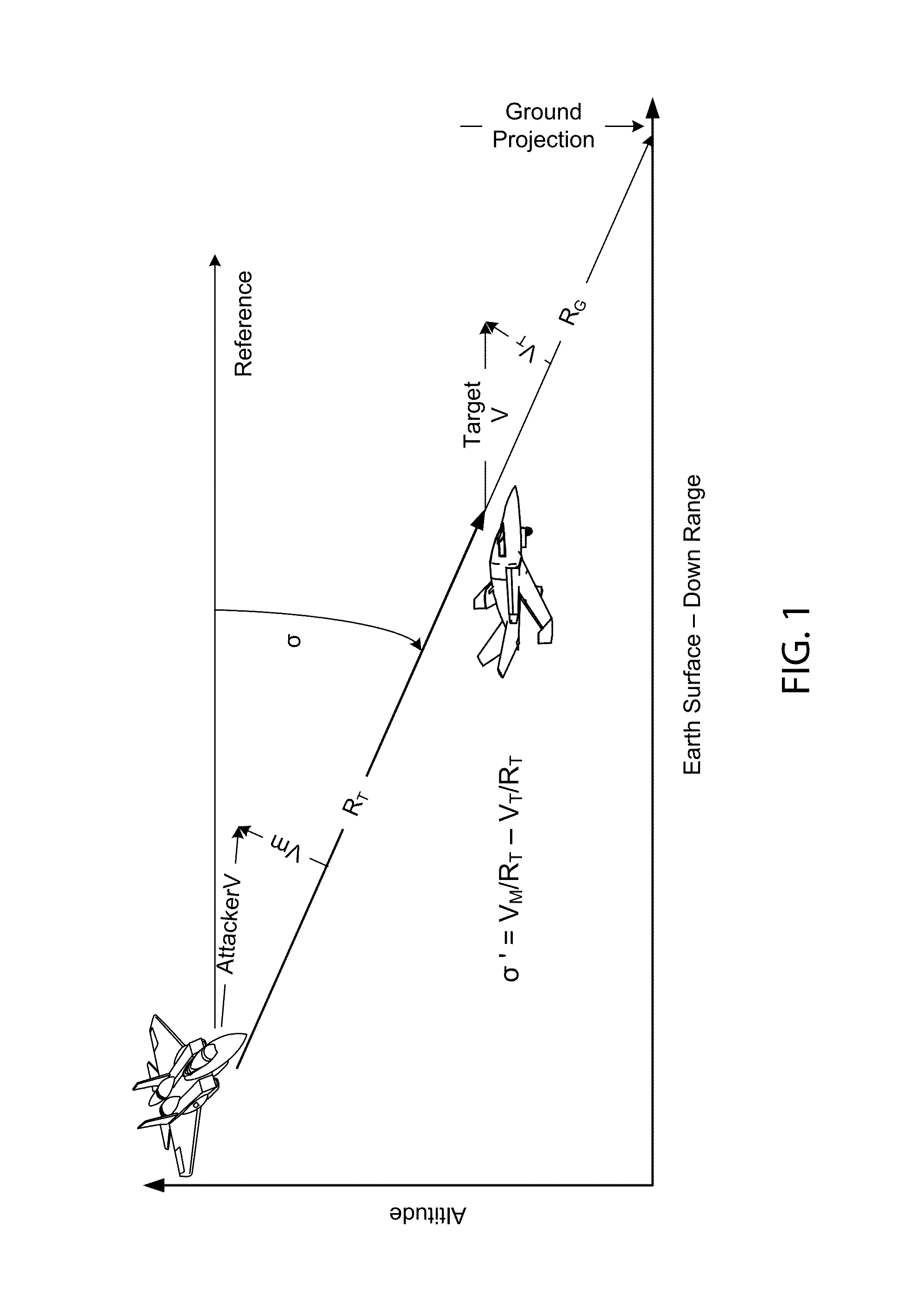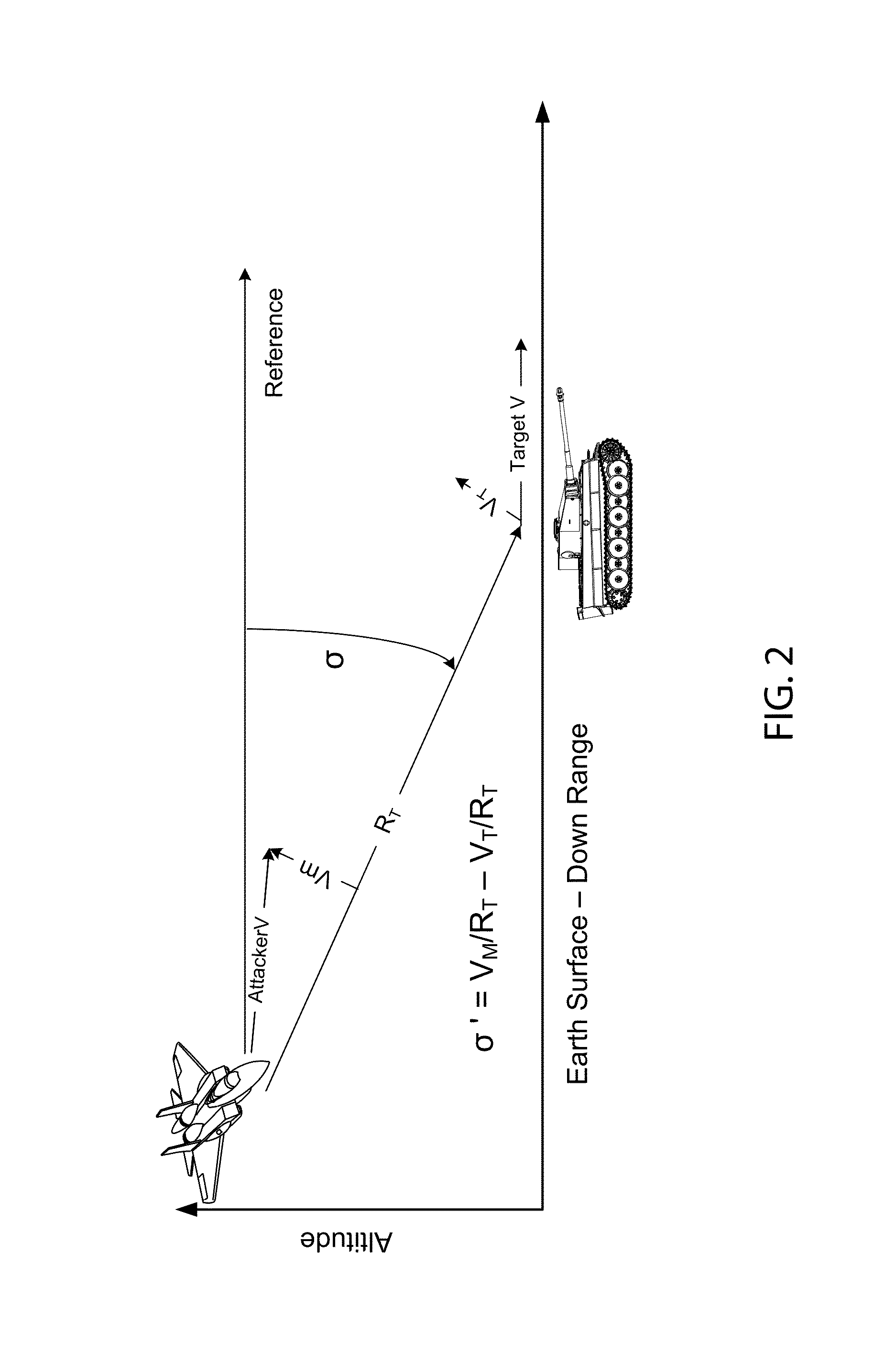Determining angular rate for line-of-sight to a moving object, with a body-fixed imaging sensor
a technology of line-of-sight and imaging sensor, which is applied in the direction of image enhancement, navigation instruments, instruments, etc., can solve the problems of insufficient high-performance interception sensors, inability to escape or mitigate efforts, and the requirement of very costly inertial-rate sensors or precise gimbals, so as to achieve the effect of low cost and less cos
- Summary
- Abstract
- Description
- Claims
- Application Information
AI Technical Summary
Benefits of technology
Problems solved by technology
Method used
Image
Examples
Embodiment Construction
[0096]The main characteristics and behaviors of preferred embodiments of our present invention will next be introduced by way of analyzing two very general examples: tracking a generic (but noncooperative) moving object, and tracking a generic airborne object. Both these exercises are performed by an unmanned airborne vehicle (“UAV”):
[0097]1) UAV to Noncooperative-Moving-Object Example
[0098]Many practical problems present the task of pursuing or rendezvousing with vehicles or other objects that may be in motion. Among these, merely by way of illustration and without at all attempting to be exhaustive, are air-traffic control, fully automatic drive-by-wire multivehicle highway operations, astronautical docking, military encounters, and delivering airdrops of food or the like to a remote very small region (e.g. a “desert island”).
[0099]Military agencies often face the task of acquiring and neutralizing noncooperative objects while the latter are mobile. In the most modern of current-d...
PUM
 Login to View More
Login to View More Abstract
Description
Claims
Application Information
 Login to View More
Login to View More - R&D
- Intellectual Property
- Life Sciences
- Materials
- Tech Scout
- Unparalleled Data Quality
- Higher Quality Content
- 60% Fewer Hallucinations
Browse by: Latest US Patents, China's latest patents, Technical Efficacy Thesaurus, Application Domain, Technology Topic, Popular Technical Reports.
© 2025 PatSnap. All rights reserved.Legal|Privacy policy|Modern Slavery Act Transparency Statement|Sitemap|About US| Contact US: help@patsnap.com



